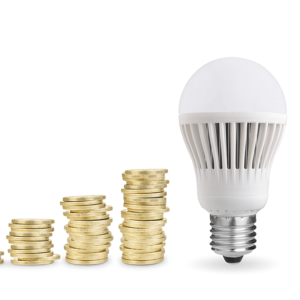If your home isn’t blessed with tons of square snaps, that doesn’t mean you can’t bend your green thumb. All of these indoor plants take up little space, and many of them even require less sun, which is a must when you have a few windows to work with. And if you don’t have a lot of green thumbs – hey, it gets there! Most of these plants are very easy to keep alive.
Everyone will found indoor plants that suit him, despite his skill level, his taste, or the space he has to spare. Dreams of your inner paradise are about to become a reality.
From clean air to creative decor – there are many benefits to having indoor plants around your home. However, it can be difficult to know what types of plants are suitable for indoor conditions as well as how to properly care for them.
We’ve rounded up the 6 best indoor plants that will thrive within four walls, and we’ve asked the experts how you can keep them (and bloom) for as long as possible.
The best house indoor plants
Monstera deliciosa or “Swiss cheese plant”

There is no doubt that you have seen a “Swiss Cheese Factory” all over Pinterest as it is one of the most popular indoor plants right now. This plant features lush green leaves with distinct holes that can fit in any room and grow to fit any space. These Monstera plants prefer a warm climate away from direct sunlight and can be cleaned regularly with a soft, damp cloth.
Allow 4 cm of soil to dry between waterings, as over-watering can lead to root rot. Signs of this are yellowing or wilting of the leaves. For best results, Monsteras should have fairly humid conditions, so avoid artificial heating and cooling, and will require monthly feeding in the spring and summer when grown in containers.
In their natural environment, Monsteras love to climb so provide them with a kind of stake or trellis for support.
Dracaena Massangeana or Mass Cane

This plant is popular among green beginners and is often an office staple thanks to its powerful nature. The clump cane often grows 1.2 to 1.8 meters high with folded stems and long green leaves that feature light yellow and green stripes running through them. It is a great choice if you are looking for a large plant.
This plant does best in bright indirect light but can tolerate low light. It will only need to be water once a week. However, it is important to note that Dracaena “Massangeana” is toxic to dogs and cats, so it is not the best choice if you have furry friends around the house.
Bromeliad

Don’t frighten the bromeliad. Although once considered a plant for the advanced gardener, these beautifully colored perennials that form roses make them easy and low-maintenance houseplants. When indoors, it needs medium to bright light (but not direct sunlight) and works well in shallow, fast-draining pots.
You can water the plant by filling the central cup (also known as the tank) of the plant once a week during the warmer months and less during the winter. Make sure to rinse it regularly to prevent the stagnation of water. Since they are not a heavy feeder, you can drop a slow-release fertilizer into the plant’s cup or mix it into the soil once a season.
Zanzibar Gem

This amazing plant not only looks amazing, but it is also hailed as “virtually indestructible” and is ideal for those who tend to neglect their plants, as they are drought-tolerant. Native to Africa, it has deep green, shiny leaves and can survive for a long time without water. The reason that the jewel of Zanzibar is so tough is its ability to store water in a potato-like tuber.
To care for your Zanzibar jewel, do not over-water it or put it in water. In fact, it thrives on neglect and prefers not to water it too much. Once a month is enough. It is best placed in a shaded area from bright to light, however, it will tolerate a shaded spot, but it will take longer to grow.
Don’t put it in direct sunlight as it will be burned, so keep it away from sunlight. You can add a slow-release fertilizer in the spring and put back into the pot if you notice the root starts to swell.
Anthurium Andraeanum

These popular indoor plants are native to Colombia and feature long, leathery, dark green leaves and produce beautiful heart-shaped ‘flowers’ in red, pink, and white that can last for weeks. The “flowers” are actually leaf-like spaces, a leaf-like bump surrounding a spike. For the plant to thrive, it requires bright light (but not direct sun).
They can reach 45 cm in height and the soil needs to be kept evenly moist from spring to fall and slightly dry in the winter. The anthurium plant benefits from being fertilized every two weeks in spring and summer with a high-phosphorous liquid fertilizer.
Maidenhair Fern

If you are willing to give the TLC maidenhair fern you need, then it can make a beautiful addition to your home. They have feathery and light green leaves with smooth glossy stems and make a wonderful hanging plant. Not only do they look crunchy, but they are truly sulfur sticks from the botanical world when it comes to caring instructions.
It doesn’t require a lot of light, but not very little, and it grows well in a warm location with little moisture. Create a rainforest environment by placing a plate full of pebbles underneath a potted plant. Fill the saucer with water just below the top of the gravel and as the water evaporates, it creates a moist microclimate around the plant.
Caring for Your Indoor Plants

- Select an area in your home that gets adequate sunlight.
- Don’t move your plants too much.
- Increased humidity in the room.
- Fill your pot with a balanced fertilizer 10-10-10.
- Prune your plants regularly.
- Do not put tea or coffee in your houseplant.






